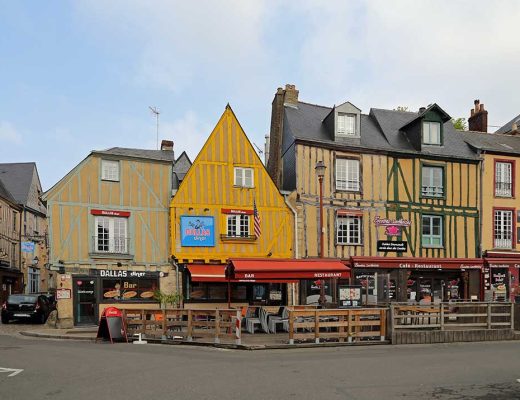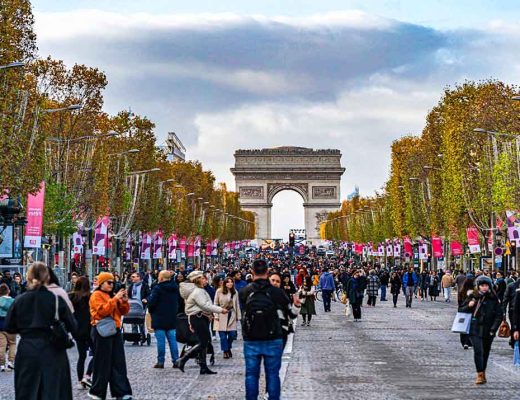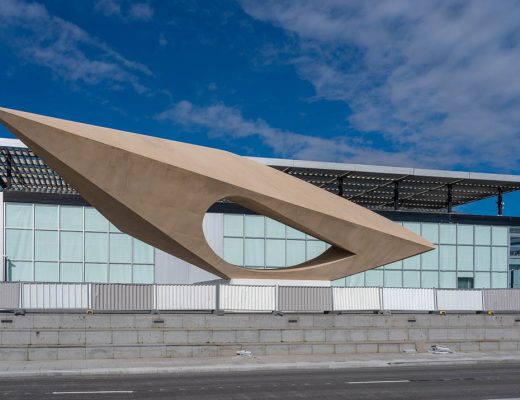November in Le Havre carries a unique mood. The Atlantic wind is brisk, carrying hints of salt and the faint smell of rain, while the low, gray sky casts a subtle, reflective light across the city’s reconstructed streets. Stepping off the train at Gare de Le Havre, I immediately felt a sense of anticipation — this city, rebuilt almost entirely after World War II, was a living museum of modernist architecture. I had booked my accommodation via Booking.com, flights through Skyscanner, and even planned dinner reservations using TheFork (LaFourchette) for evenings near the waterfront. Despite the careful planning, the city itself — its streets, buildings, and open squares — seemed to demand attention, inviting me to wander and explore.
Walking along Rue de Paris toward the city center, I was struck by the geometric precision of the buildings, the way sunlight glinted off the concrete façades, and the vast openness of the public squares. The design is both austere and surprisingly human, with careful attention to scale, proportions, and the interplay of light and shadow.
St. Joseph’s Church: A Towering Beacon
Location and Overview
Located at Rue Jules Siegfried, St. Joseph’s Church rises majestically above Le Havre’s city center, immediately drawing the eye with its striking 107-meter reinforced concrete spire. Designed by the renowned architect Auguste Perret, the church is both a monument to post-war reconstruction and a showcase of modernist ideals. Walking toward it through the open plazas of the city center, I felt a profound sense of reverence mingled with curiosity. The building’s austere exterior, geometric precision, and towering verticality seemed almost to whisper stories of resilience, reminding me that Le Havre had been rebuilt from the ground up after the devastation of World War II.
Approaching the church, the scale of the structure is impressive from any angle. The plaza around it, expansive and thoughtfully planned, allows visitors to appreciate the full height and symmetry of the design. The spire stretches skyward, a landmark visible from across the city, guiding visitors and locals alike toward its presence. Even on a chilly November morning, the wind whipping off the harbor, the church seemed inviting, almost solemn, as if it were holding space for reflection amidst the busy urban environment.
Features and Highlights
Inside, the atmosphere is unexpectedly serene. Tall stained glass windows cast kaleidoscopic patterns across the smooth concrete floors, creating a subtle interplay of light and shadow. The vertical lines of the interior draw the eyes upward toward the spire, emphasizing both height and simplicity in a way that feels meditative. I remember standing quietly, absorbing the scale and stillness, noticing how the light shifted as it passed through the windows, illuminating different parts of the nave at various times of the day.
The church’s design is minimalist yet emotionally powerful. Every angle, column, and beam demonstrates Auguste Perret’s mastery of reinforced concrete and modernist principles, combining strength with elegance. The sense of space inside is both grand and intimate, allowing visitors to feel a connection to the architecture without being overwhelmed by it.
Cost and Tickets
Admission to the church itself is free, making it accessible to all visitors. Guided tours that provide historical and architectural context are available for around €5–€8, bookable via GetYourGuide or directly on-site. Visiting in November offers a quieter experience, allowing for more personal reflection without the crowds that fill the church in peak tourist months.
Tips for Visitors
Comfortable shoes are essential, as the surrounding plaza is large and often involves extended walking. Photography is allowed, though flash may be restricted inside to protect the stained glass. Taking your time to explore both the interior and exterior will reveal subtle details, from the geometric precision of the spire to the carefully proportioned concrete columns that define the nave. Whether visiting for architecture, history, or personal reflection, St. Joseph’s Church provides an unforgettable experience in the heart of Le Havre.
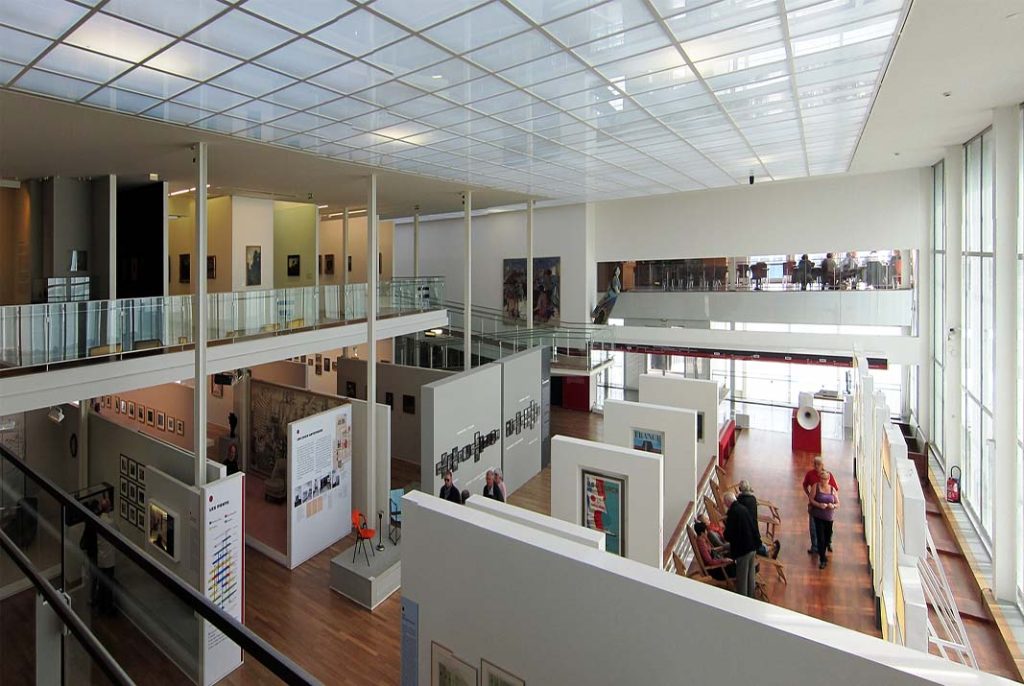
André Malraux Museum of Modern Art (MuMa)
Location and Overview
At Square Saint-Roch, near the waterfront, MuMa houses one of France’s most impressive collections of impressionist and modern art, all set against a striking modernist building. I entered on a crisp November afternoon, and the contrast between the contemporary architecture and the classical artwork immediately caught my attention.
Features and Highlights
The building itself is a work of art: glass walls flood the galleries with natural light, emphasizing both the artworks and the geometric precision of the structure. Exhibits range from Monet to Boudin, many depicting Normandy’s seascapes. I remember standing by a painting of Le Havre’s port, feeling the lines of the building echo the brushstrokes.
Cost and Tickets
General admission is €8–€12, depending on exhibitions, and tickets can be reserved on GetYourGuide or directly via the museum website.
Tips for Visitors
Allow at least two hours to explore fully. Weekdays in November are quieter, making it easier to enjoy the artwork without crowds. Photography is generally permitted in some areas, but check signage.
City Center Walk: Rue de Paris and Surrounding Squares
The real joy of Le Havre’s modern architecture lies in simply wandering. From Place de l’Hôtel de Ville to Place de l’Église Saint-Joseph, the urban grid showcases Auguste Perret’s vision: wide avenues, symmetrical facades, and a harmonious integration of public and private spaces. I spent hours walking, stopping to appreciate the clean lines, the interplay of glass and concrete, and the subtle variations in detail that bring warmth to otherwise austere structures.
The City Hall (Hôtel de Ville)
Location and Overview
On Place de l’Hôtel de Ville, the modern city hall is an elegant concrete building with large windows and an open forecourt. It represents the civic pride of the post-war era, combining functional design with aesthetic simplicity.
Features and Highlights
Inside, the atrium is bright and airy, featuring contemporary art and historical exhibits about Le Havre’s reconstruction. I found it fascinating to see how functional public spaces can also be expressive and modern.
Cost and Tickets
The city hall is free to enter, though some exhibitions may charge €3–€5. Information is available on-site or on the official Le Havre tourism website.
Tips for Visitors
Check opening hours in advance, especially in November, as some areas close earlier in winter months.
Modern Residential Buildings
Le Havre is not only about museums and churches. Walking through the Grands Pavilions district, I observed modernist apartment buildings with functional layouts and creative use of concrete. The façades are decorated with subtle patterns, and balconies align symmetrically, reflecting Perret’s attention to detail.
I paused often, taking photographs and imagining life in these buildings, where everyday life unfolds within architecturally significant structures. Residents I met were friendly, happy to share tips about hidden corners and cafés.
Visiting MuMa and St. Joseph’s Church: Practical Tips
Booking tickets through GetYourGuide is convenient, with digital tickets reducing waiting time. For accommodation near the city center, I recommend Hôtel Vent d’Ouest or Hilton Garden Inn Le Havre Centre, bookable via Booking.com or Expedia. For meals after architectural exploration, TheFork (LaFourchette) lists highly rated waterfront bistros serving fresh seafood and local Normandy dishes.
November weather can be unpredictable. I carried a lightweight umbrella and dressed in layers, walking comfortably between indoor sites and the open plazas. Comfortable footwear is essential, as exploring the modernist city center involves considerable walking across concrete and cobblestone surfaces.
Reflections on Le Havre’s Modernist Identity
What struck me most was how Le Havre’s modern architecture is not static. The city feels alive, with buildings responding to light, wind, and human activity. The interplay of public squares and thoroughfares allows for social interaction, while individual buildings convey artistic and historical narratives. Every corner reveals another layer of Perret’s vision, from churches to museums, civic buildings, and residential blocks.
Walking through the city in November, I noticed the muted colors of the concrete interacting with the soft, low winter light. The air smelled faintly of salt and smoke from nearby cafés, and the occasional gull wheeling overhead added a sense of continuity between the city and the sea. The experience is immersive: architecture, atmosphere, and environment coalesce to create a uniquely contemplative urban experience.
Booking and Travel Platforms for a Seamless Trip
For long-distance travel to Le Havre, flights can be booked through Skyscanner or Google Flights, often connecting via Paris Charles de Gaulle or Orly. Train connections from Paris are available via SNCF Connect.
Accommodations should be booked in advance through Booking.com, Expedia, or Hotels.com, ensuring proximity to city center attractions. Dining reservations, particularly for waterfront bistros, can be secured through TheFork (LaFourchette). Museum and architectural tours, including guided visits to MuMa and St. Joseph’s Church, can be pre-booked via GetYourGuide or directly on official websites.
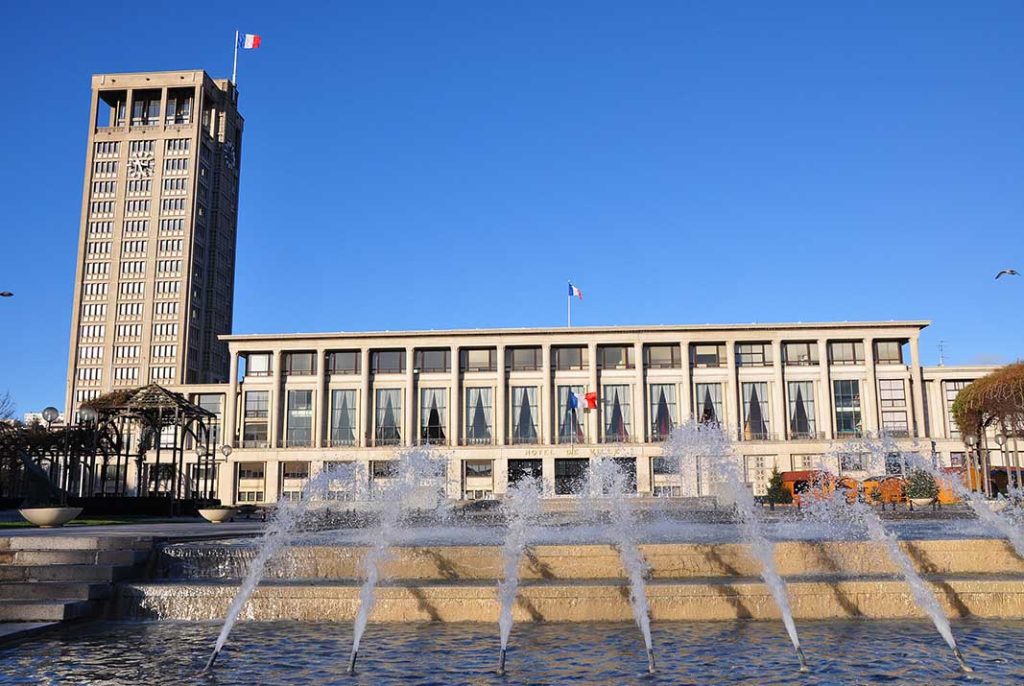
Exploring Beyond the Core
While the city center offers a concentrated experience of modernist architecture, the surrounding areas, including the harbor and residential districts, add context. I walked to Bassin du Commerce, where concrete structures frame the water, providing insight into the functional side of Perret’s urban planning. Even brief excursions to neighborhoods like Grands Pavilions or along Rue de Paris reveal how residents interact with these spaces daily, making architecture tangible and lived-in.
An Immersive Architectural Journey
Le Havre’s modernist city center offers more than buildings — it is a story of resilience, vision, and aesthetic precision. From St. Joseph’s Church to MuMa, Hôtel de Ville, and residential blocks, the city conveys a narrative of post-war reconstruction, human-centric design, and enduring artistic vision.
November’s subdued light, crisp air, and quieter streets make it an ideal time to explore, allowing for reflection and photography without crowds. With proper planning — using platforms like Booking.com, GetYourGuide, TheFork (LaFourchette), Skyscanner, and Expedia — visitors can experience Le Havre seamlessly, combining architectural sightseeing with cultural, culinary, and personal exploration.
Walking these streets, observing concrete, glass, and human activity in harmony, I realized that Le Havre is not merely a city to be seen, but an environment to be experienced. Every step, turn, and gaze reinforces its identity as a modernist masterpiece, inviting travelers to engage with both history and design on a profoundly personal level.

